
The travel experience on early London buses
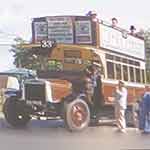
If you were be taken back to early 20th Century London, what would strike you about the differences in travelling by public road transport in towns? This page answers the question from personal experience, continuing the website theme of everyday life in the past. It gives personal experience interwoven with background research, and for this it is probably unique.
____
Extracted from the memoirs of the webmaster's mother(1906-2002) and edited by the webmaster with further research
Traffic noise
If you were able to find yourself on a busy street in the early years of the 20th century, the first difference that would probably strike you would be the noise. It would not be the traffic noise that you are used to today. It would be the clatter of horses hoofs mixed with the rumble of motorised buses and the swoosh of trams and trolleybuses.
I was young enough to remember seeing buses and trams pulled by horses, but it was not to be for long. The last London horse-drawn bus ran in 1914 when I was eight years old.
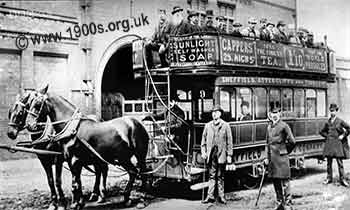
Horse-drawn bus, early 20th century, from the effects of Ena Cole
The open top decks
Another striking difference from today would be that all public transport vehicles had open tops with a rail round for security. It was pleasant to sit on the top deck to see the scenery as it passed by, but it could be cold, particularly in a strong wind.
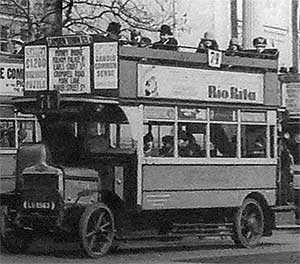
Early motorised bus with every space on the rail taken up by adverts. Detail from a photo in the London Transport Museum.
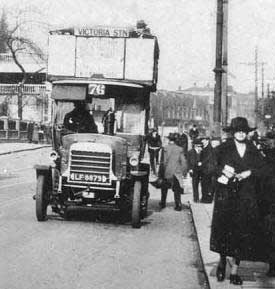
Detail from a photo in the effects of Ena Cole
Weather protection on top decks
There were waterproof protection flaps on the open top decks for use in the rain. They were attached to the seat in front and could be unhitched and lifted to go across our knees and laps. The following photo shows them hitched up for dry weather. I suppose that they did provide some protection, but every other part of our bodies just got wet.
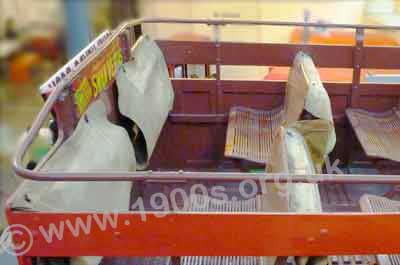
Waterproof flaps which could be unhitched in the rain for covering knees and laps. Photographed in the London Transport Museum.
There were even adverts on the backs of the seats, along the piece of wood that held the covers.
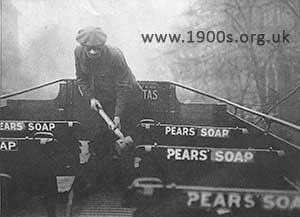
As the photo shows, it was common for adverts to be placed on the backs of seats. Photographed in the London Transport Museum.
Covered top buses and trams did not come into service until the 1920s.
Safety on the top decks
Anyone determined, particularly children playing around, could climb over the rail round the top deck, fall and hurt themselves - not that I ever saw this happening. There were no safety belts.
The seats
The seats were just wooden slats, but they weren't as uncomfortable as this may seem because the slats were profiled to fit the shape of a seated person. Being slats they let water through to the floor when it rained. So were not wet for long.
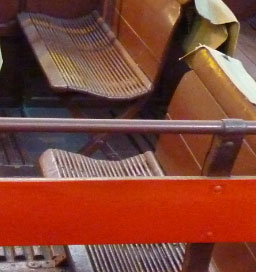
The profiled slatted wood seats, waterproof seat backs and - just visible - the knee covers for the passengers behind
The backs of the seats were made of some sort of waterproof material which could be clammy on a hot day.
Vehicle shapes
There were a range of shapes for the buses, but they were all more box-like than those of today. Another significant difference was where passengers entered the bus. There were open entry points leading to both decks at the fronts of some buses - as seen in the image of the horse-drawn bus - and at the backs of others. Another difference was where the driver sat. With horse-drawn vehicles he always sat in the open so that he had good control of the horse's reins. With motorised ones, he could be more comfortable with a roof over his head.
If you can add anything to this page or provide a photo, I would be pleased if you would contact me.
Text and images are copyright
sources: early 20th century material
sources: ww2 home front and other material
contact
the webmaster/author/researcher/editor
privacy policy
















